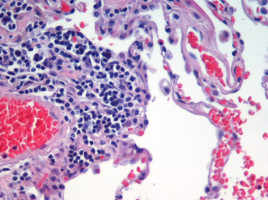
An analysis of 70 studies finds that use of the diagnostic imaging procedure of fludeoxyglucose F18 (FDG)-positron emission tomography (PET) combined with computed tomography (CT) may not reliably distinguish benign disease from lung cancer in populations with endemic (high prevalence) infectious lung disease compared with nonendemic regions, according to a study published in JAMA.
Depending on the risk for cancer, diagnostic guidelines suggest or recommend FDG combined with PET as a noninvasive test to assess the risk of cancer or benign disease, according to background information in the article.
Stephen A. Deppen, Ph.D., of the Tennessee Valley Healthcare System and Vanderbilt University Medical Center, Nashville, and colleagues conducted a meta-analysis to examine the accuracy of FDG-PET to diagnose lung lesions in regions with locally endemic infectious lung diseases.
The researchers identified 70 studies that met criteria for inclusion in the analysis.
Studies reported on a total of 8,511 nodules; 5,105 (60 percent) were malignant.
Pooled sensitivity of FDG-PET for diagnosing lung cancer was 89 percent and pooled specificity was 75 percent.
There was a 16 percent lower average adjusted specificity in regions with endemic infectious lung disease (61 percent) compared with nonendemic regions (77 percent).
Lower specificity was observed when the analysis was limited to rigorously conducted and well-controlled studies.
"FDG-PET for the diagnosis of lung cancer in patients who reside in a region with significant endemic infectious lung disease should be recognised as having lower specificity than previously reported. Knowledge of this reduction in specificity should limit the use of FDG-PET to diagnose lung cancer unless substantial institutional expertise in FDG-PET interpretation has been proven. Should low-dose CT screening for lung cancer become the diagnostic standard, knowledge of FDG-PET/CT performance is even more critical because the vast majority of indeterminate lung nodules detected through screening are benign," the authors write.
Source: The JAMA Network Journals
The World Cancer Declaration recognises that to make major reductions in premature deaths, innovative education and training opportunities for healthcare workers in all disciplines of cancer control need to improve significantly.
ecancer plays a critical part in improving access to education for medical professionals.
Every day we help doctors, nurses, patients and their advocates to further their knowledge and improve the quality of care. Please make a donation to support our ongoing work.
Thank you for your support.